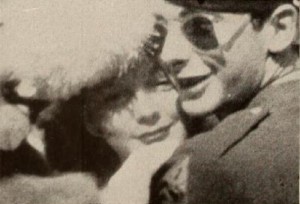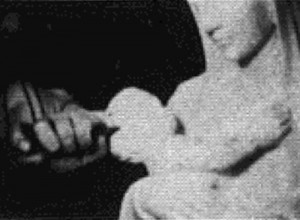"Points out the difficulties of choosing a job and stresses consulting a guidance counselor for assistance" via WorldCat.

"An eye for topical touches and a persistence that would shame the most aggressive news cameraman are responsible for Terry Manos's success in recording the V-E Day activities in New York City. Without the aid of a telephoto lens and balked at every turn by finicking guards, Mr. Manos's camera nevertheless caught the full flavor of the celebration in Times Square as well as some amazingly sharp studies of the personalities who participated in the program at Central Park. For ignoring the theoretical limitations often ascribed to the 8mm. camera and producing a well knit movie of a great historical event, praise is due to an enterprising amateur." Movie Makers, Dec. 1946, 488.
"Italian Diary takes us to Italy where we see many of the old familiar places but lots of little seen nooks and crannies as well. A young girl narrator gives life and effervescence to the film which otherwise could well be just another travelog. Harshbarger has tied the sequences together with a travel album, showing us color photos on the pages of the album which then come alive on the screen. The film also received the MPD Travel Film Award, judged as being the best travelog of well over a dozen that dotted this year's contest, six of which were among the top ten and the honorable mentions" PSA Journal, Sept. 1964, 50.

"The film opens in Florence, Italy, with the statue of David by Michelangelo, in marble. Then we quickly move to the quarry to observe the processes of opening a crack, part of the process of shearing off a piece from the huge mountain of marble. Later we see the cutting and slicing into useful slabs and polishing. Also, we visit a studio where, among other works, a large block of marble is being carved into a statue of Abraham Lincoln for the city of Boston. The commentary on tape is well done. This will be included in the Package" PSA Journal, Oct. 1962, 33.
"Stephen F. Voorhees's 400 ft. travel film of Italian architectural scenes deserves placement in this list because it combines three factors but rarely brought together in pictures of this type. First, the photography is extraordinarily good, not only with reference to the routine requirements of exposure and focus but because it is artistic throughout and the composition never descends to the casual or the "snap shot" level. Second, Mr. Voorhees's film has a natural and easy continuity, jogging amiably through Venice and its environs, much as a traveler might do himself, pausing for a bit of incidental human interest and catching a scene that the filmer felt was unusual but presenting it without any preliminary flourishes, as one friend who might have said to another in the course of a stroll, "Don't miss that, by the way," pointing to something seen on the way. Last of the three things, so unusual to find combined, is a professional study, made by the filmer, himself a great architect, preserving those details which he wished to bring from northern Italy for later possible use. The great Colleoni statue is studied from many angles. Details of tiles and other wall ornamentations are offered and buildings are presented from one viewpoint after another. Yet all of this is done unpedantically and the nonprofessional audience is not aware that this subtle architectural record is more than a delightful travel film." Movie Makers, Dec. 1931, 658.

Kodachrome travelogue showing daily life and architecture in Italy.
"documentario"/documentary -
"un complesso vivace e policromo di visioni del paesaggio e della vita di Albania"—"I Littoriali del cinema: Un’altra interessante serie di documentari,” La Stampa, September 3, 1939
"...a lively, polychromatic complex of visions of Albania's landscape and life."
"doc. turistico"/tourism documentary
documentario/documentary
Total Pages: 299